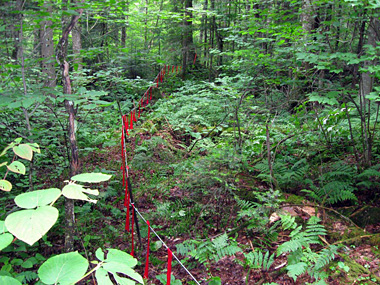Be Informed
Sign up for Sépaq emails to be the first to find out about our promotions, news and special offers.
Having extensive knowledge of the parks to better preserve them is the foundation that justifies the efforts invested in inventories, monitoring programs and scientific research. At Parc national du Mont-Tremblant, much effort has been put into finding ways of keeping the wolf population wild and preventing the development of familiar wolves. One innovative method for the prevention of wolf familiarization is currently being tested for the first time in Québec. The restoration of shoreline environments, the ecological restoration of deteriorated sites, the fight against harmful invasive species and the restoration of indigenous forest stands are also important areas of research.
Find out more about scientific research in the Québec's National Parks network
Since re-educating wolves is complex work, we are interested in developing techniques that reduce the risk of encounters between wolves and people.

A Fladry Line
A committee of experts in the management of wildlife and national parks has identified the Fladry line as a promising technique. It consists of a simple rope adorned with colourful flags hung at regular intervals that barely touch the ground. For unknown reasons, wolves refuse to cross through the flags.
The park team put a prototype in place, which has been under evaluation since 2008. An enclosure was set up around some campsites on the Ménagerie campground in the Diable sector to prevent wolves from roaming into this area. We hope this technique will keep wolves away from the campsites. The first season yielded encouraging results.
Sign up for Sépaq emails to be the first to find out about our promotions, news and special offers.